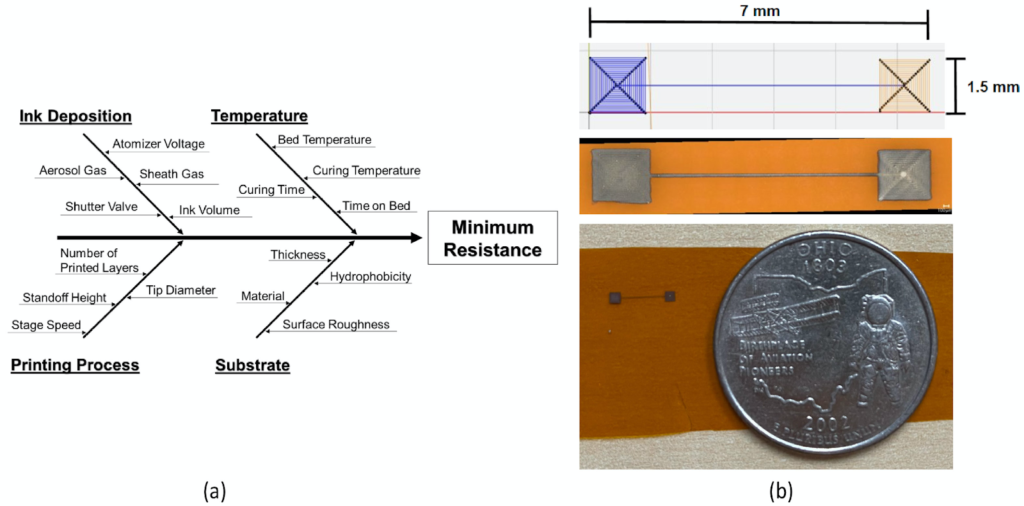Janet Gbur, Research Assistant Professor, Case Western Reserve University, Investigator, Advanced Platform Technology (APT) Center, VA Northeast Ohio Health Care Center | Mitchell Melander – MS Student – Case Western Reserve University
Point-of-care devices, flexible sensors, and implantable electronics are just beginning to benefit from a novel circuit fabrication approach using aerosol jet printing (AJP). Compared to traditional microfabrication techniques, aerosol jet printing can be performed outside of a clean room, requires less chemicals, is less expensive, and allows for ease of customization and printing on highly topological surfaces. Process optimization and functional reliability are paramount to device success and yet, not significantly discussed in literature.
Identification of the full complement of parameters affecting printing results is shown in Figure 1a. This work will examine a subset of these parameters through a design of experiment (DOE) to examine the effect on AJP to create flexible circuits. Prints will be evaluated qualitatively and quantitatively, collecting data on the morphology and dimensions of the printed conductive traces. Successful prints will undergo preliminary mechanical testing in the Advanced Manufacturing and Mechanical Reliability Center at CWRU for adhesion of the ink to substrate and ability to withstand static bend loading in addition to meeting electrical resistance requirements while under mechanical load.
The use cases for flexible electronics can vary significantly; however, fundamental material and device-level understanding can be gained by considering a simple circuit. For early printing replicates, a dumbbell shaped trace (Figure 1b) will be fabricated to study the effects of parameters on the deposition quality and adhesion. Optimized parameters will be used to print strain gauges followed by static bend and electrical testing, in parallel. Dr. Janet L. Gbur and Mitchell Melander (MS student) plan to develop processing maps correlating with printing parameters to guide future development of the sensors, including final fabrication, mechanical testing, and functional testing.
“Aerosol jet printing has the potential to enhance the process of creating medical devices designed to improve the quality of life for the people who need them.”
-Mitchell Melander

